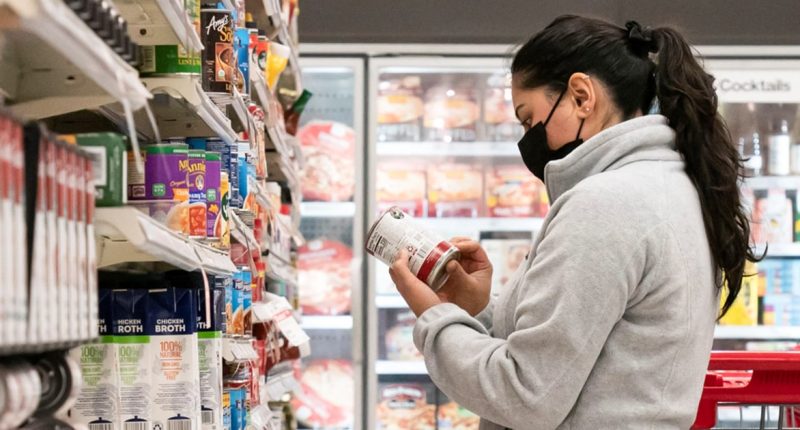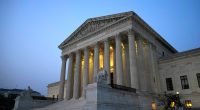
Elevated inflation continues to pervade the U.S. economy.
And while the pace of 12-month price increases has slowed from the near-double-digit highs reached in the summer of 2022, American consumers are still encountering higher prices compared with before the pandemic.
With a few exceptions, economists agree that the higher prices are most likely here to stay. Now, the question is how quickly price growth for consumer goods and services will continue to slow.
On Tuesday, the Bureau of Labor Statistics will release the consumer price index for January. Estimates are for a 12-month increase of 2.9%, down from 3.4% in December. Excluding food and gas, expectations are for a reading of 3.7%, little changed from 3.9%.
If the annual CPI reading lands at or below the 2.9% forecast, it would be the first time inflation has drifted back into the 2% range since March 2021.
In other words, price growth will most likely have continued to decline in January, adding further evidence that an economic “soft landing” is unfolding.
High price tolerance
Still, consumers appear to be adjusting to a new normal of higher prices. NBC News recently covered how the cost of fast food — traditionally seen as a refuge from high-priced dining — has surged in the post-pandemic period.
“Eating at home has become more affordable,” McDonald’s CEO Chris Kempczinski said in a call with analysts last week, noting consumers making $45,000 or less per year were showing particular price sensitivity. “The battleground is certainly with that low-income consumer.”
After a massive surge amid the outbreak of the war in Ukraine, price growth for food at home has slowed dramatically — to just 1.3% on a 12-month basis in December.
By comparison, the price of food away from home has climbed, rising just above 5% on a 12-month basis in December.
Despite the recent divergence, the price of food in both categories has surged an identical 25% since the start of the pandemic. It’s one reason it has taken so long for consumer confidence to rebound in the post-pandemic period era and overall readings remain below pre-pandemic levels.
As for Tuesday’s report, economists say that while it is likely to show marginal improvement toward the Federal Reserve’s official target of 2% annual inflation, it looks like solid economic growth will keep the pace of price increases elevated.
“We continue to see the path back to 2-percent inflation as challenging, absent a more significant loosening in the labor and housing markets,” economists with Citibank wrote in a note to clients Monday.
In other words, slower price growth could come at the cost of higher unemployment.
But absent a weakening labor market, price growth may be stuck above the 2% target, given wage and home price increases that remain elevated, the Citi analysts said.
Hurry up and wait
If that is the case, lower interest rates may not begin to materialize until late spring or early summer. In his most recent remarks, Federal Reserve Chair Jerome Powell said he would need to see greater confidence that inflation was slowing meaningfully. Powell also indicated that an interest rate cut in March was highly unlikely.
After March, the next opportunity for the Fed to announce a rate cut would be May 1. But the Citi analysts say it might take one more meeting after that, in June, for the first rate cut to come.
Analysts at Bank of America also see June as the likeliest month for the first rate cut since the end of the pandemic. In a note to clients Monday, they said January’s data will help Fed officials build a case for a rate cut in June but won’t be decisive on its own.
Meanwhile, the chief political victim of higher inflation remains President Joe Biden. In the latest NBC News poll, Biden’s chief opponent, Republican former President Donald Trump, held a 22-point advantage on the question of which presidential candidate would do a better job handling the economy, with 55% picking Trump and 33% choosing Biden.
A separate poll published last month by Harvard CAPS-Harris found immigration had surpassed inflation as the chief concern among voters who were surveyed — but with inflation still ranking second.
Over the weekend, Biden called on corporations to curb the trend of “shrinkflation,” charging the same prices for lesser-sized goods. A report released Sen. Bob Casey, D-Pa., found household paper products were 34.9% more expensive per unit than they were in January 2019, with about 10.3% of the increase due to producers’ shrinking the sizes of rolls and packages.
As for how Trump would tackle inflation, liberal and conservative economists alike say some of his proposals — specifically adding foreign tariffs on imports and limiting immigration — could actually reignite it. Trump has also promised to replace Powell, whom he nominated when he was president in 2017, as Federal Reserve chairman, though only because, Trump said, he believed Powell would seek to “help the Democrats” by cutting interest rates in advance of the November 2024 election, a claim that is unfounded.
The Fed has historically sought to immunize itself from political pressures and didn’t comment on Trump’s remarks.
Source: | This article originally belongs to Nbcnews.com










